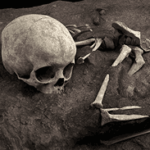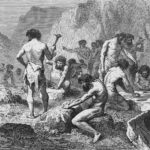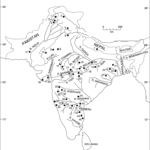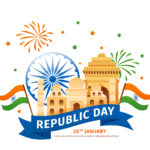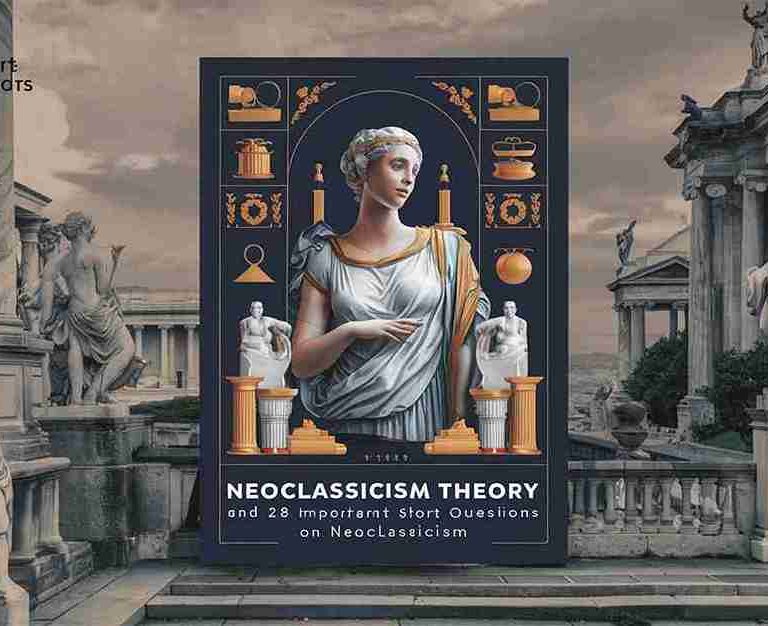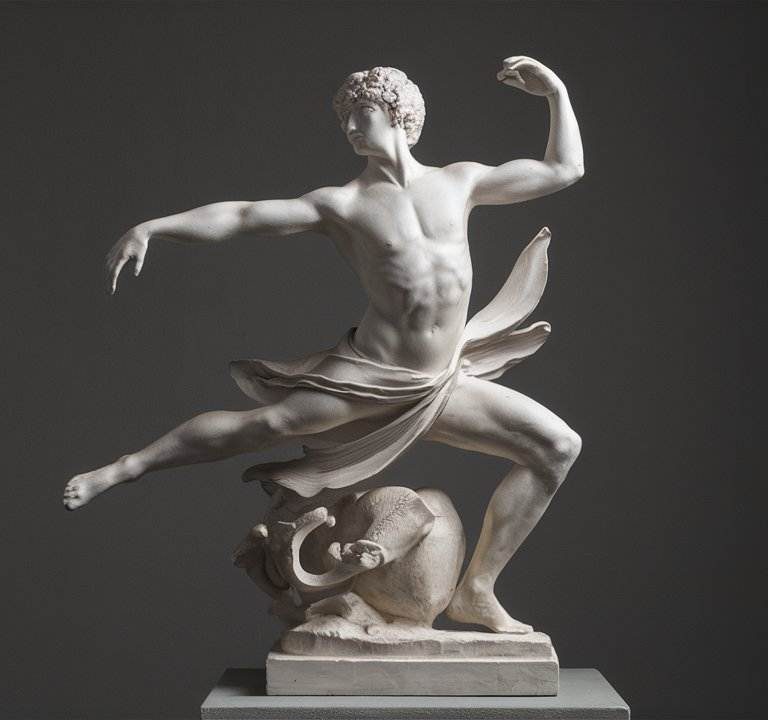132 Short questions on Anglo Saxon Period (0-1065)
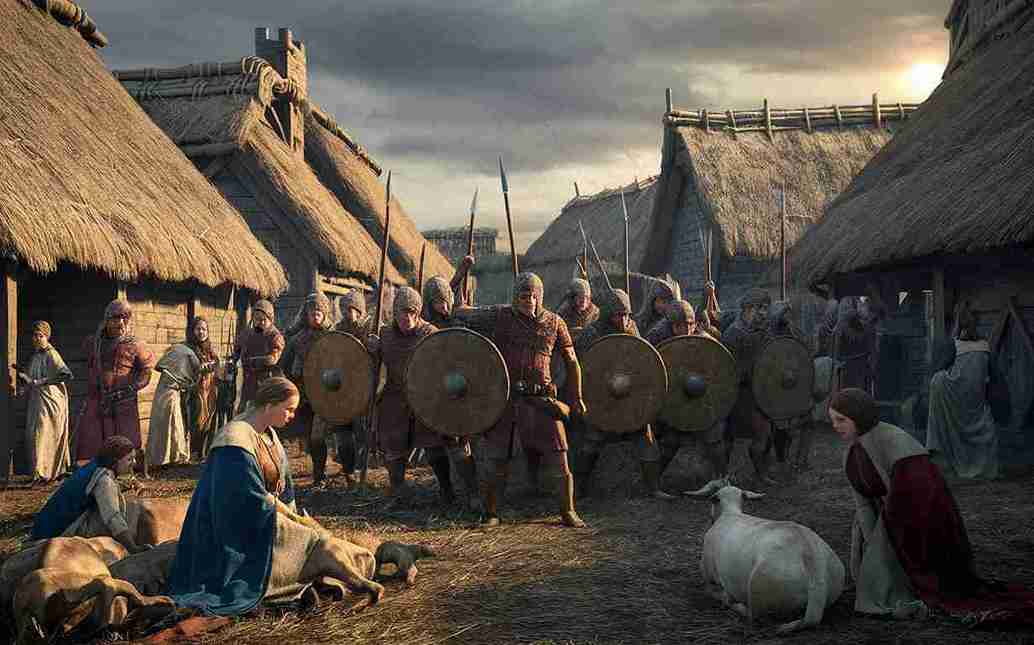
Anglo Saxon
132 Short questions on Anglo Saxon Period (0-1065)
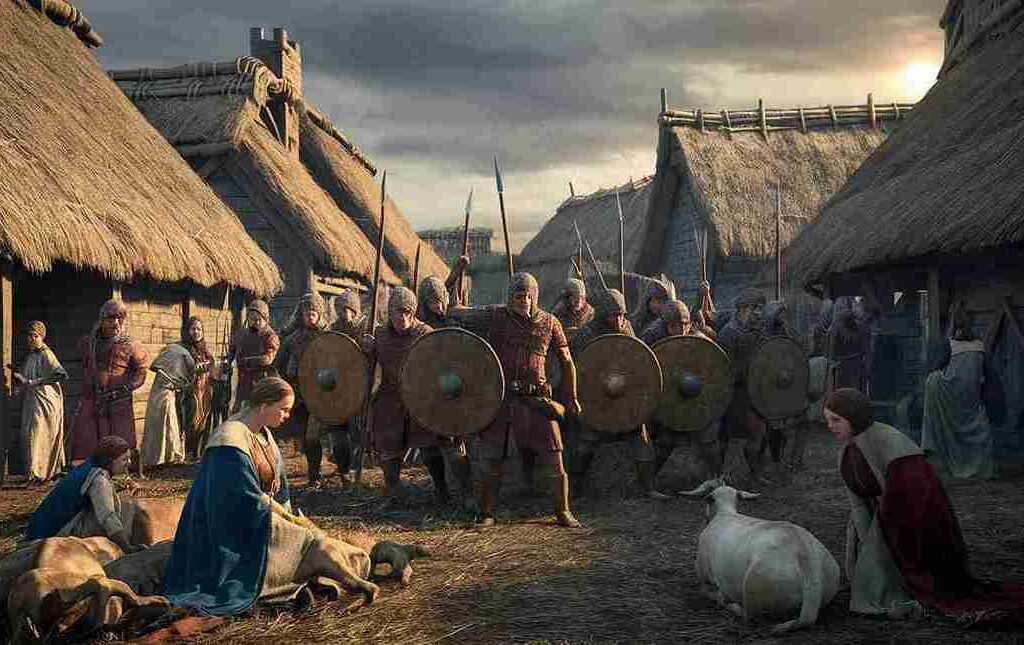
Q.1. Name two Anglo Saxon ‘Battle’ poems.
Ans. Two Anglo Saxon ‘Battle’ poems are The Battle of Brunanburth (937 AD) and The Battle of Maldon (993 AD).
Q.2. Name the poem by Cynewulf which has its subject matter the search for the cross
Ans. Name of the poem by Cynewulf which has its subject matter the search for the cross is Elene.
Q. 3. Mention a philosophical work of the Middle Ages translated by Alfred. Jesblo ant
Ans. A philosophical work of the Middle Ages translated by Alfred is Boethius’s Consolation of Philosophy.
Q. 4. Name two prose writers of the Anglo Saxon Period.
Ans. Name of two prose writers of the Anglo Saxon Period are Aelfric and Wulfstan.
Q. 5. To whom is the poem The Dream of the Rood ascribed?
Ans. The poem The Dream of the Rood is ascribed to Cynewulf.
Q. 7. Name one Anglo Saxon religious poem.
Ans. Genesis (by Caedmon) is one Anglo Saxon religious poem.
Q. 6. Which Anglo Saxon work is the story of a national defeat?
Ans. The Anglo Saxon work The Battle of Maldon is the story of a national defeat. The contenders were the English and the Danes. The English nation was defeated in the battle.
Q. 8. Who has been called ‘the father of English prose’?
Ans. Alfred has been called ‘the father of English prose’.
Q. 9. What does ‘Widsith’ mean?
Ans. ‘Widsith’ means ‘the wide goer or, wanderer’ [the far traveller].
Q.10. Name any two Anglo Saxon love poems.
Ans. Two Anglo Saxon love poems are The Wife’s Complaint and The Husband’s Message.
Q.11. Name two books translated by Alfred.
Ans. The two books translated by Alfred are Orosius’s Universal History and Geography and Bede’s Ecclesiastical History of the English People.
Q.12. What is the name of Beowulf’s mother?
Ans. The name of Beowulf’s mother is Ecgtheow.
Q.13. What is the name of Beowulf’s father?
Ans. The name of Beowulf’s father is Scyld.
Q.14. What is the name of Beowulf’s uncle? Who was the king of Denmark at this time?
Ans. The name of Beowulf’s uncle is Kind Hygelac. Hrothgar was the king of Denmark at this time.
Q.15. Name the two homilists of the Anglo Saxon Age.
Ans. Aelfric and Wulfstan were the two homilists of the Anglo- Saxon Age.
Q.16. What was the name of Hrothgar’s wife?
Ans. The name of Hrothgar’s wife was Wealththeow.
Q.17. Mention any two compound words used by Anglo Saxon poets.
Ans. Any two compound words used by Anglo Saxon poets are whale-way/swan-path for sea and waves’-journey for flood.
Q.18. Name four manuscripts in which the surviving Old English poetry is preserved.
Ans. The four manuscripts in which the surviving Old English poetry is preserved are (a) the Beowulf MS in the British Museum; (b) the Junius MS in the Bodbian Library, Oxford; (c) the Exeter Book in the Chapter Library of Exeter Cathedral; (d) the Vercelli Book in the Cathedral Library at Vercelli near Milan.
Q.19. Name an Anglo Saxon lyric in which there is no melancholy.
Ans. An Anglo Saxon lyric in which there is no melancholy is The Husband’s Message.
Q.20. When did Augustine arrive in Britain?
Ans. Augustine arrived in Britain in 597 AD.
Q.21. In which dialect is the Beowulf manuscript written?
Q.22. Where is the manuscript preserved?
Ans. The Beowulf is written in West Saxon. The manuscript is preserved in the British Museum.
Q.22. Name the first great English historian and the book written by him.
Ans. The Venerable Bede is the first great English historian. His book Ecclesiastical History of the English People is a model for English history.
Q.23. Name two poems in Junius manuscript.
Ans. The two poems in Junius manuscript are Daniel and Exodus.
Q.24. In which Anglo Saxon poem is a female warrior the protagonist? Who is the poet?
Ans. The Anglo Saxon poem in which a female warrior is the protagonist is Judith. The poet is Caedmon.
Q.25. Name the Anglo Saxon poem which celebrates a mythological bird. With whom is the bird compared?
Ans. The Anglo Saxon poem which celebrates a mythological bird is The Phoenix. The bird is compared with Christ.
Q.26. Name one AnglobSaxon prose writer other than King Alfred.
Ans. One Anglo Saxon prose writer other than King Alfred is Aelfric.
Q.27. Name three books translated by Alfred.
Ans. The three books translated by Alfred are Pastoral Care by Pope Gregory, the History of the World of Orosius and Bede’s Ecclesiastical History of the English People.
Q.28. In which Anglo Saxon poem is a block of wood the speaker?
Ans. A block of wood is the speaker in the Anglo Saxon poem The Husband’s Message.
Q.29. Name three Anglo Saxon poems in which the theme of love has been used.
Ans. The three Anglo Saxon poems in which the theme of love has been used are The Wife’s Complaint, The Husband’s Message and Wulf and Eadwacer.
Q.30. Name the Anglo Saxon poem that celebrates defeat in war.
Ans. The Anglo Saxon poem that celebrates defeat in war is The Battle of Maldon.
Q.31. Which Anglo Saxon poet signed his verses in runic characters?
Ans. The Anglo Saxon poet who signed his verses in runic characters is Cynewulf.
Q.32. What are Kennings?
Ans. Kennings are metaphorical compounds such as head- jewels(–eyes), flesh- coat(=body), warrior-dress(=armour)etc. Often the identity of the objects intended by these metaphors must be guessed at. Kennings is really a poetical sport of trying to discover the subject by one of its attributes, a process of wit- sharpening.
Q.33. Who in the Old English period was transformed into a poet by divine inspiration?
Ans. Caedmon was transformed into a poet by divine inspiration in the Old English period.
Q.34. Who is the author of Sermo Lupi ad Anglos?
Ans. Wulfstan is the author of Sermo Lupi ad Anglos.
Q.35. Name a poem other than Beowulf in which the heroic character persists.
Ans. A poem other than Beowulf in which the heroic character persists is Waldere.
Q.36. Name the male monster Beowulf fought and defeated.
Ans. The male monster Beowulf fought and defeated is Grendel.
Q.37. Which Anglo Saxon elegiac poem mourns the vanished glory of a city?
Ans. The Ruined Burg (The Ruin) is an Anglo Saxon elegiac poem which mourns the vanished glory of a city.
Q.38. Who translated Pastoral Care and Ecclesiastical History?
Ans. Alfred translated Pastoral Care and Ecclesiastical History.
Q.39. Name two pioneers of English prose in the Anglo Saxon period.
Ans. Alfred and Aelfric are two pioneers of English prose in the Anglo Saxon period.
Q.40. Name two elegiac poems of the Anglo Saxon period.
Ans. The Ruined Brug and The Wife’s Complaint are the two elegiac poems of the Anglo Saxon period.
Q.41. What is the commonest measure in Anglo-Saxon poetry?
Ans. The Alliteration is the commonest measure in Anglo-Saxon poetry.
Q.42. To which century did King Alfred belong? Name one of his prose works.
Ans. King Alfred belonged to the ninth century. One of his prose works is The Anglo-Saxon Chronicle.
Q.43. In which Anglo-Saxon poem do we find refrain?
Ans. Deor’s Lament is the Anglo-Saxon poem in which we find refrain.
Q.44. How many lines does Waldhere comprise of?
Ans. Waldhere comprises of two fragments (of 32 and 31 lines respectively).
Q.45. Who is the author of Soliloquies?
Ans. St. Augustine is the author of Soliloquies.
Q.46. Who is the author of Catholic Homilies?
Ans. Aelfric is the author of Catholic Homilies.
Q.47. Who is the author of Christ?
Ans. Cynewulf is the author of Christ.
Q.48. Who is the author of The Wanderer?
Ans. Elene is the author of The Wanderer.
Q.49. How many lines does Beowulf comprise of?
Ans. Beowulf comprises of 3183 lines.
Q.50. Who discovered the manuscript of Finnsburh?
Ans. Dr. George Hicks discovered the manuscript of Finnsburh on the cover of a manuscript of Homilies in the Library of Lambeth Palace.
Q.51. How many lines does Finnsburh comprise of?
Ans. Finnsburh comprises of fifty lines.
Q.52. How many lines does Widsith comprise of?
Ans. Widsith comprises of 143 lines.
Q.53. How many lines does Wanderer comprise of?
Ans. Wanderer comprises of 115 lines.
Q.54. Where did the Angles and the Saxons come from to the England?
Ans. The Angles and the Saxons came from Germany to the England.
Q.55. What were the pagan tribes in England?
Ans. The pagan tribes in England were the Angles, the Saxons and the Jutes.
Q.56. Which is the year of composition of Beowulf?
Ans. Beowulf was composed in the year 725 A.D.
Q.57. What is the meaning of the word Wyrd in Anglo-Saxon literature?
Ans. Wyrd in Anglo-Saxon literature means fate.
Q.58. Give one example of work written in Alliterative verse during the Middle Ages.
Ans. Pearl is an example of work written in Alliterative verse during the Middle Ages.
Q.59. What is Carolingian Renaissance? Who was the most important in the movement?
Ans. Carolingian Renaissance is the revival of learning which took place under Charles the Great in the Anglo-Saxon period. Alcuin, the scholar of York took the leading role inthis cultural movement.
Q.60. What is the common theme in the elegiac poems of the Anglo-Saxon period?
Ans. Life in all the Anglo-Saxon elegies is sorrowful. The speakers are all fatalistic, though at the same time they are courageous to accept the challenge of the sea and danger.
Q.61. Who is the author of The Owl and the Nightingale?
Ans. Nicholas de Guildford is the author of The Owl and the Nightingale.
Q.62. Who comforts himself with refrain: That grief passed away: so may this sorrow pass.
Ans. Deor comforts himself with refrain: That grief passed away: so may this sorrow pass.
Q.63. Why is Bede remembered? (K.U. 2002)
Ans. The Venerable Bede is widely regarded as the greatest of all the Anglo-Saxon scholars. He wrote or translated some forty books on practically every area of knowledge, including nature, astronomy, and poetry. He also wrote the first martyrology (a chronicle about the lives of the saints). However, his most famous writing was on theology and history and his best known work is The Ecclesiastical History of the English People.
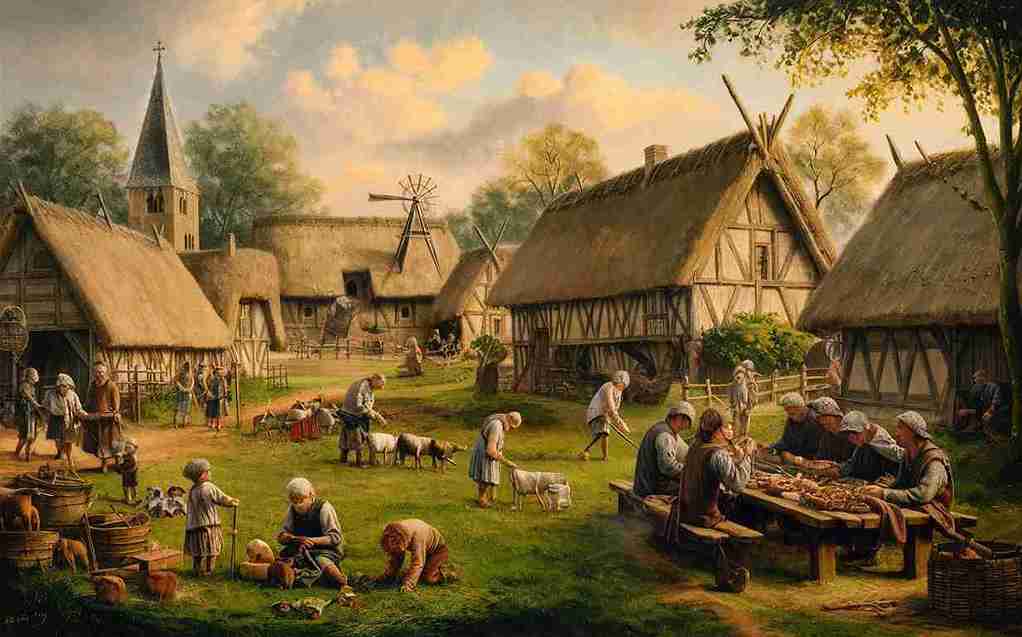
Q.64. Name two Anglo-Saxon ‘battle’ pomes. K.U. 2002
Ans. Beowulf and the Battle of Maldon are two Anglo-Saxon ‘battle’ pomes.
Q.65. Name the poem by Cynewulf which has for its subject matter the search for the cross: K.U. 2002
Ans. The Dream of the Rood is the poem by Cynewulf which has for its subject matter the search for the cross. K.U. 2002
Q.66. Mention a philosophical work of the Middle Ages translated by Alfred.
Ans. Consolation of Philosophy, a philosophical work by Boethius, is translated by Alfred.
Q.67. Name at least two poems belonging to the Caedmonian school of poetry. K.U. 2003
Ans. Juliana and Elene are two poems belonging to the Caedmonian school of poetry.
Q.68. Name two homilies written during the Old English period. K.U. 2003
Ans. Incarnation of the Lord (In Natali Domini) and Quinquagesima/Shrove Sunday (Dominica Prima in Quinquagesima) are two homilies written during the Old English period.
Q.69. Why is the year 1066 important? K.U. 2003
Ans. In 1066 the Normans invaded England and ended Anglo- Saxon rule just as the Danes had done previously, the Saxons before them, the Romans before them and the Celts before them.
Q.70. What kind of poem is The Wander? K.U. 2003
Ans. The Wander is an alliterative verse.
Q.71. Who wrote Confessio Amantis? In which language was it written? K.U.. 2004
Ans. John Gower wrote Confessio Amantis. It is written in English.
Q.72. Name two characters who narrate tales in Chaucer’s The Canterbury Tales. K.U. 2004
Ans. The Knight and the Monk are two characters who narrate tales in Chaucer’s The Canterbury Tales.
Q.73. Name two Scottich Chaucerians. K.U. 2004
Ans. JAMES I, KING OF SCOTS, and ROBERT HENRYSON are two Scottich Chaucerians.
Q.74. Why is William Caxton famous? K.U. 2004
Ans. William Caxton was an English printer who in 1474 printed the first book in English. He is famous for introducing printing press in England.
Q.75. Who wrote the Catholic Homilies? K.U. 2005
Ans. Aelfric wrote the Catholic Homilies
Q.76. Which battle is described in The Battle of Maldon? K.U. 2005
Ans. This took place in 991AD when the Vikings raided the Essex coast.
Q.77. Name two characters in the poem Beowulf apart from Beowulf. K.U. 2005
Ans. Ælfhere, a kinsman of Wiglaf and Beowulf and Grandel, one of three are two characters in the poem Beowulf apart from Beowulf.
Q.78. Which Old English poem has the Cross as its speaker?K.U. 2005
Ans. Dream of the Rood is an Old English poem that has the Cross as its speaker.
Q.79. What is the subject of the poem The Dream of the Rood? K.U. 2006
Ans. The Dream of the Rood is an explicitly Christian poem that attempts to appeal to Anglo-Saxons from a pagan culture. The theme of the poem is the cross, and more importantly, the cross suffers with Christ
Q.80. Who wrote Ecclesiastical History?
K.U. 2006
Ans. Eusebius wrote Ecclesiastical History.
Q.81. Name two works by Caedmon.
K.U. 2006
Ans. Genesis BK II and Caedmon’s Hymn.
Q.82. Who was Wulfstan? Name one of his works.
K.U. 2006
Ans. Wulfstan was an English Bishop of London.
Q.83. Who composed Brut?
K.U. 2006
Ans. English priest Layamon composed Brut.
Q.84. Name the Middle English prose work that enumerates rules for ascetic life.
Ans. Ancrene Wisse is the Middle English prose work that enumerates rules for ascetic life.
Q.85. Who is the first English translator of the Bible?
K.U. 2006
Ans. John Wycliffe is the first English translator of the Bible.
Q.86. Why is Geoffrey of Monmouth important in the history of Middle English Romances?
K.U. 2006
Ans. He is best known for his chronicle Historia Regum Britanniae (“History of the Kings of Britain”), which was widely popular in its day and was credited, uncritically, well into the 16th century, being translated into various other languages from its original Latin.
Q.87. Who wrote Ecclesiastical History of the English Race?
K.U. 2007
Ans. Bede wrote Ecclesiastical History of the English Race.
Q.88. In whose reign did the Anglo-Saxon Chronicle have its beginning?
K.U. 2007
Ans. Towards the end of Alfred’s reign the Anglo-Saxon Chronicle have its beginning.
Q.89. When did the Anglo-Saxons arrive in Britain?K.U. 2007
Ans. In the 5th century Anglo-Saxons arrived in Britain.
Q.90. Name two religious poets of the Anglo-Saxon period.
K.U. 2007
Ans. Caedmon and Cynewulf are two religious poets of the Anglo-Saxon period.
Q.91. Who is the author of Colloquy?
Ans. Aelfric is the author of Colloquy. K.U. 2010
Q.92. Who wrote the poem, The Dream of the Rood?
Ans. Cynewulf wrote the poem, The Dream of the Rood.
Q.93. Name an Old English elegy which contains a ‘refrain’.
K.U. 2010
Ans. Wulf and Eadwacer is an Old English elegy which contains a ‘refrain’.
Q.94. What is the meaning of the title ‘Widsith’?
K.U. 2010
Ans. The meaning of the title ‘Widsith’ is ‘far journey’.
Q.95. Who were the monsters slain by Beowulf?
K.U. 2010
Ans. Hubert, Wiglaf, Grendel, and the Meadhall were the monsters slain by Beowulf.
Q.96. What does the poem ‘The Ruin’ describe?
K.U. 2010
Ans. The poem is an elegy found in the Exeter Book that depicts a city which has turned to ruins.
Q.97. What do the two birds in The Owl and the Nightingale represent?
K.U. 2010
Ans. The poem is an allegory in which the owl represents the contemplative life and the Nightingale the active life.
Q.98. Name any two characters in Chaucer’s Canterbury Tales.
K.U. 2010
Ans. The Knight and The Miller are two characters in Chaucer’s Canterbury Tales.
Q.99. Name a work translated by Alfred.
K.U. 2011
Ans. Dialogues of Gregory the Great is a work translated by Alfredolná sitt bib .
Q.100. Name any one poem in the Exeter Book.
K.U. 2011
Ans. The Wanderer is a poem in the Exeter Book.
Q.101. Who signed his poems in runic letters?
K.U. 2011
Ans. Cynewulf signed his poems in runic letters.
Q.102. Who were Scops?
K.U. 2011
Ans. Scops were poetic readers also used a harp during poems. Scops were known to travel from village to village; however, many had permanent posts in the king’s court or mead halls. Usually, they performed for great feasts, celebrations, or the homecoming of soldiers from war.
Q.103. What does the poem The Seafarer describe? K.U. 2011
Ans. Literary critics who see “The Seafarer” as an allegory posit that the “exile” is actually Adam and his descendants, who were cast out of the Garden of Eden. In the Bible, the Christian pilgrims who journey to the “City of God” are exiles.
Q.104. Name two Anglo Saxon heroic poems.K.U. 2011
Ans. Beowulf, The Battle of Brunanburh are two Anglo Saxon heroic poems.it ops
Q.105. Name any two cycles of Miracle plays.
K.U. 2011
Ans. Chester, and Coventry are two important cycles of the Miracle plays.
Q.106. Name any two works by Gower.
K.U. 2011
Ans. Mirour de l’Omme and Confessio Amantis are two works by Gower.
Q.107. Which Old English heroic poem is alluded to in Beowulf? to sudtes
K.U. 2012
Ans. Waldere is alluded to in Beowulf.
Q.108. Who is the author of Life of King Alfred?
K.U. 2012
Ans. Asser is the author of Life of King Alfred.
Q.109. Name the Old English religious poem in which the Cross is the speaker.lea
K.U. 2012
Ans. Dream of the Rood is the Old English religious poem in which the Cross is the speaker.
Q.110. What is a ‘kenning’?
K.U. 2012
Ans. A kenning is a much-compressed form of metaphor, originally used in Anglo-Saxon and Norse poetry. In a kenning, an object is described in a two-word phrase,, such as ‘whale-road’ for ‘sea’.
Q.111. When did the Anglo-Saxon invaders come to Britain?
K.U. 2013
Ans. The Anglo-Saxon invaders came to Britain in 1066.
Q.112. What is a ‘Caesure’?
Ans. In meter, a caesura is a complete pause in a line of poetry or in a musical composition. Caesurae features prominently in Greek and Latin verse, especially in the heroic verse form, dactylic hexameter.
Q.113. Why is 597 A.D. important?
K.U. 2013
Ans. In 597 A.D. the Roman brand of Christianity is brought to Britain for the first time by St. Augustine, the missionary sent from Pope Gregory to convert the Saxons.
Q.114. In which dialect is Widsith written?K.U. 2013
Ans. Widsith, like almost all Old English poetry, is written in the normal Late West Saxon literary speech.
Q.115. Who were the Teutonic people?
Ans. The Teutons were a Germanic tribe mentioned by Greek and Roman authors, notably Strabo and Marcus Velleius Paterculus.
Q.116. What is the name of Deor’s rival in Deor’s Lament?
K.U. 2014
Ans. Heorrenda is the name of Deor’s rival in Deor’s Lament.
Q.117. Who is the original author of the Pastoral Care?
K.U. 2014
Ans. John Patton is the original author of the Pastoral Care.
Q.118. In which year did the Battle of Maldon take place?
K.U. 2014
Ans. In 991 AD the Battle of Maldon took place.
Q.119. Who wrote Catholic Homilies.
Ans. Ælfric wrote Catholic Homilies.
Q.120. Who wrote History of the Kings of Britain.
Ans. Geoffrey of Monmouth wrote History of the Kings of Britain.
Q.121. Who wrote De amore.
Ans. Andreas Capellanus wrote De amore.
Q.122. Who wrote The Fates of the Apostles.
Ans. Cynewulf wrote The Fates of the Apostles.
Q.123. Who wrote Historia RegumBritanniae (The History of the 1105 Kings of Britain)
Ans. Geoffrey wrote Historia Regum Britanniae. (The History of the Kings of Britain)
Q.124. Who wrote History of Canterbury.
Ans. Gervase wrote History of Canterbury.
Q.125. Who wrote Roman de la rose.
Ans. Guillaume de Lorris wrote Roman de la rose.
Q.126. Who wrote Opus majus.
Ans. Roger Bacon wrote Opus majus.
Q.127. Who wrote The parliament of fowls. The legend of good women.
Ans. Chaucer. Geoffrey wrote The parliament of fowls. The legend of good women.
Q.128. Who wrote Book of the Duchess.
Ans. Chaucer wrote Book of the Duchess.
Q.129. Who wrote Piers Plowman (B Text).
Ans.. Langland wrote Piers Plowman (B Text).
Q.130. Who wrote Troilus and Criseyde.
Ans. Chaucer wrote Troilus and Criseyde.
Q.131. Who wrote The Canterbury Tales.
Ans. Chaucer begins wrote The Canterbury Tales.
Q.132. Who wrote Confessio Amantis.
Ans. Gower wrote Confessio Amantis.
NORMAN CONQUEST & RELIGIOUS LITERATURE MIDDLE ENGLISH PERIOD (1100-1500)
About the Author
Sisir Mondal
Administrator
My name is SISIR MONDAL, I complete my graduate from University of Kalyani , West Bengal, India . I am like to build WordPress website and also developing this type of website . If you want your website , you can contact me trough email. thanks to visit this site.
